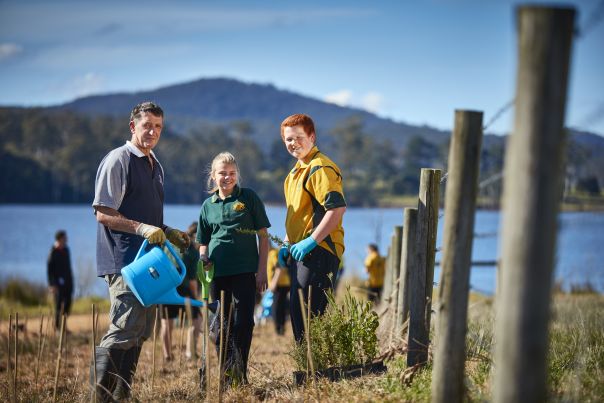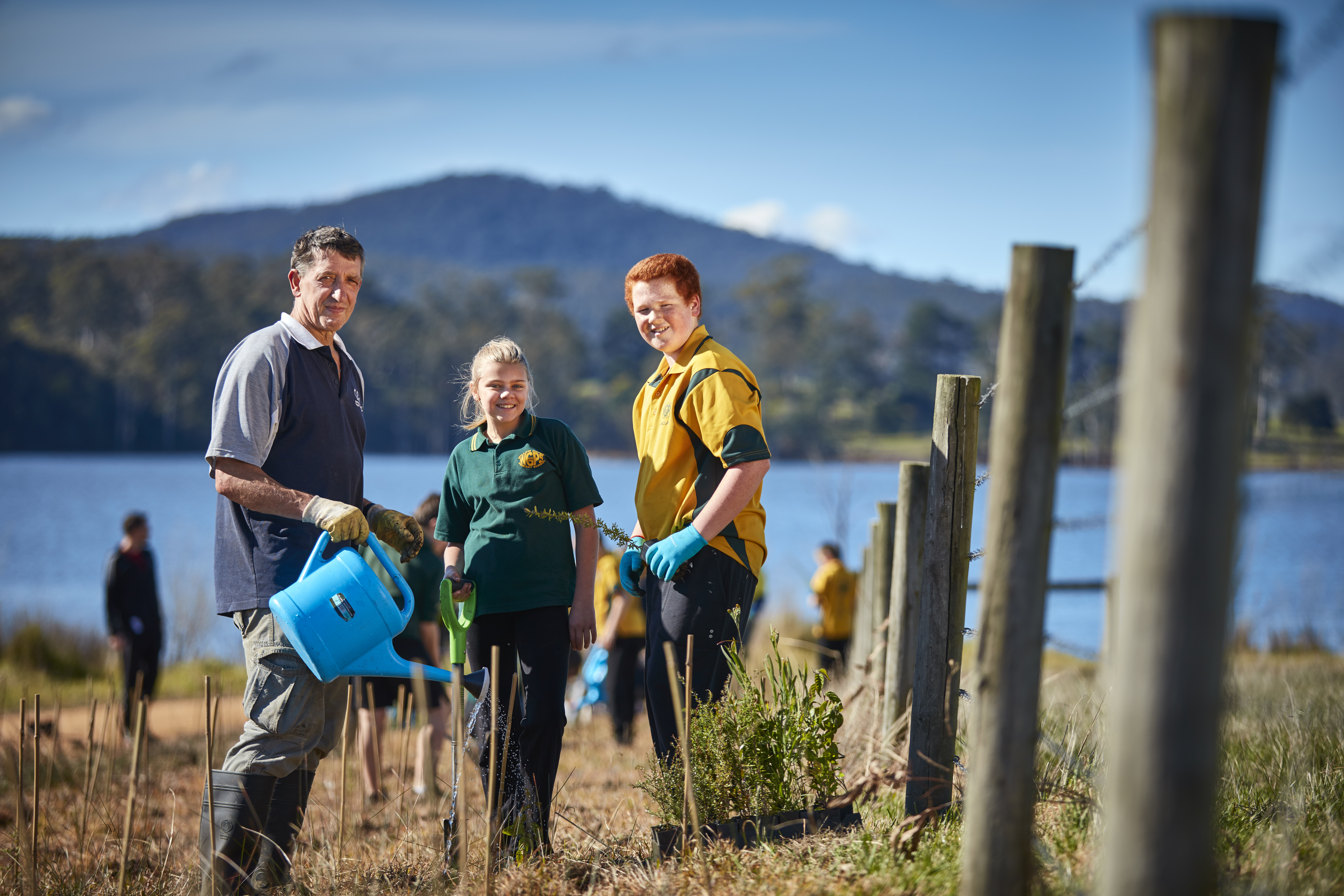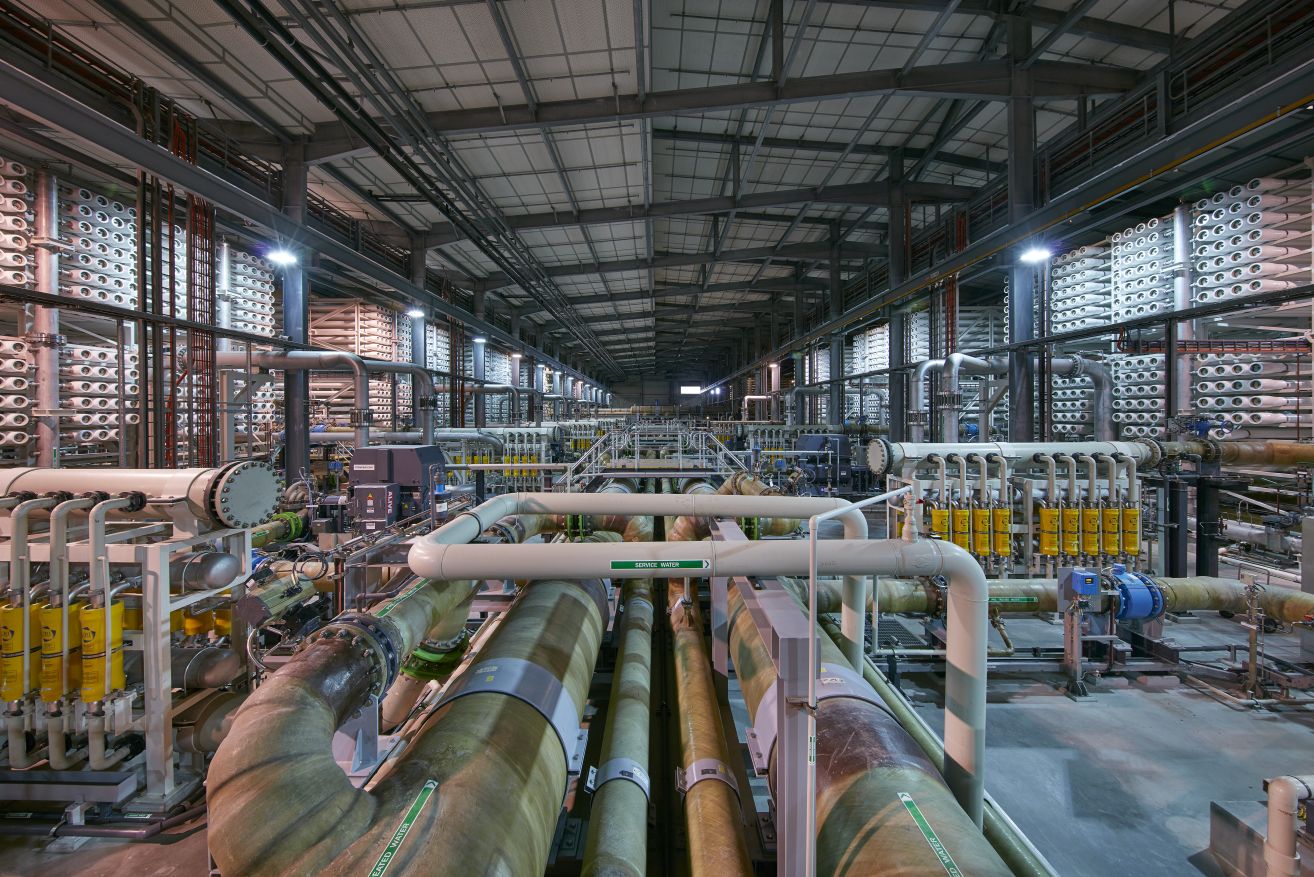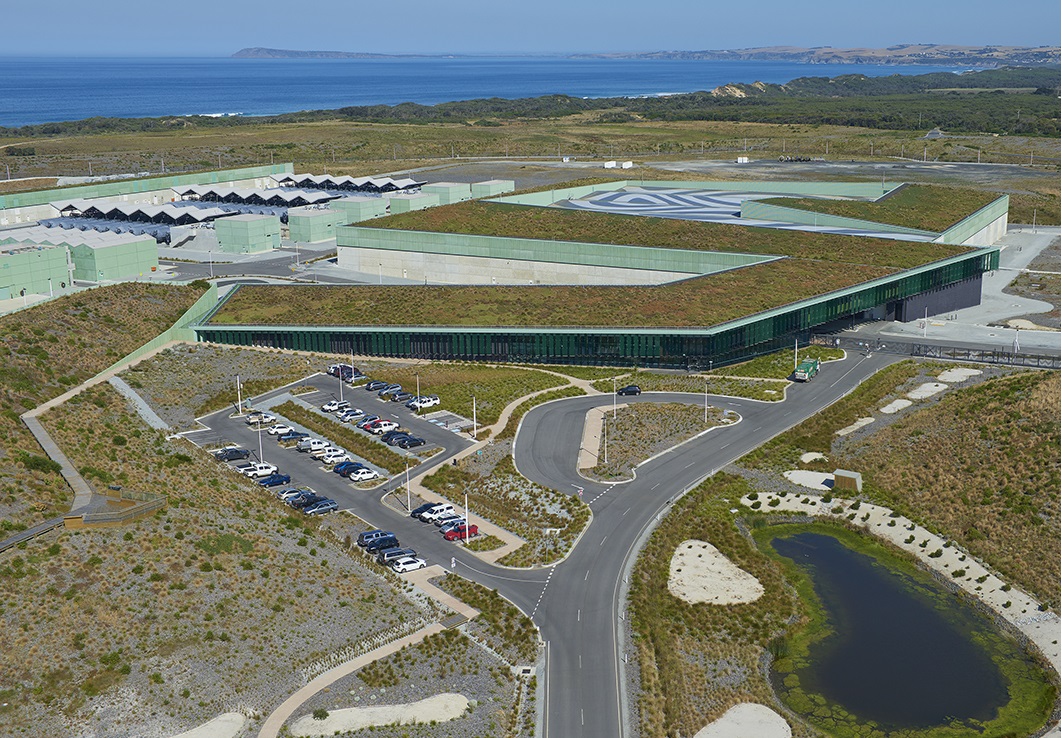On this page:
The plant can deliver up to 150 billion litres (150 gigalitres) of fresh drinking water per year.
It uses reverse osmosis and state-of-the art technology and processes. Reverse osmosis is the most energy-efficient method of desalinating water.
The 38 hectare plant is set among constructed dunes and restored woodlands and wetlands. A 225 hectare ecological reserve surrounds the plant in Wonthaggi, Victoria.
Ecological Reserve 10 Year Anniversary
Integrated with the landscape
The living green roof is one of the largest ever created in Australia. It's covered with indigenous ground covers, tussocks and low shrubs. It also reduces noise, heat loss and corrosion. As a result, the plant has lower maintenance and running costs.
Coastal dunes created from soil excavations integrate the plant into the coastal landscape. The plant is barely visible from public viewing points and blends into the natural landscape.
Millions of plants and trees have reinstated indigenous vegetation after decades of farming.
The coastal landscape includes freshwater wetlands, woodland and coastal heaths. This provides local fauna with a biodiverse habitat.
It also features 8km of walking, cycling and horse-riding paths that link with existing trails in the area for community use

-

-

-
Connecting with Bass Strait and water supplies
The plant connects with Bass Strait via long intake and outlet tunnels. These not only draw in seawater but also protect the coast and marine environment. It does this by exiting saltwater concentrates beyond sensitive marine areas.
Step-by-step breakdown on how seawater becomes drinking water
-
Step 1
Seawater is drawn in from the ocean through specially designed intake structures. It is is drawn at very low speeds, even small fish can swim against the intake current. A protective grill ensures that larger marine life can't swim into the structure.
-
Step 2
The intake tunnel transports seawater to the plant site.
-
Step 3
Seawater is screened and fine particles removed.
-
Step 4
Seawater is filtered to remove solids such as any remaining sand and sediment.
-
Step 5
Seawater is passed through 2 stages of reverse osmosis. The seawater is desalinated by being pushed through ultra-fine membranes under high pressure. Fresh water passes through and leaves seawater concentrate behind.
-
Step 6
Desalinated water has minerals added to meet drinking water standards, Australian Drinking Water Guidelines and Victorian health requirements.
-
Step 7
Drinking water is transferred to reservoirs and distributed into the Melbourne and regional water supply networks. Desalinated water blends with water from existing catchments.
-
Step 8
Outlet tunnel transports seawater under the dunes and coast, thereby protecting the environment.
-
Step 9
Seawater concentrate is returned to the ocean with specially designed nozzles so it can rapidly diffuse.
Commissioning the plant and water quality
Like any piece of infrastructure, the desalination plant was tested to ensure it operated properly.
The Victorian Desalination Project officially finished its commissioning tests on Monday, 17 December 2012. During commissioning, the plant made 23 billion litres of desalinated water that was distributed into the Melbourne network.
The plant was then placed in standby mode – ready to be brought back into production to deliver any future water order placed by the State.
Read more about water quality testing during commissioning.
Page last updated: 29/05/24



